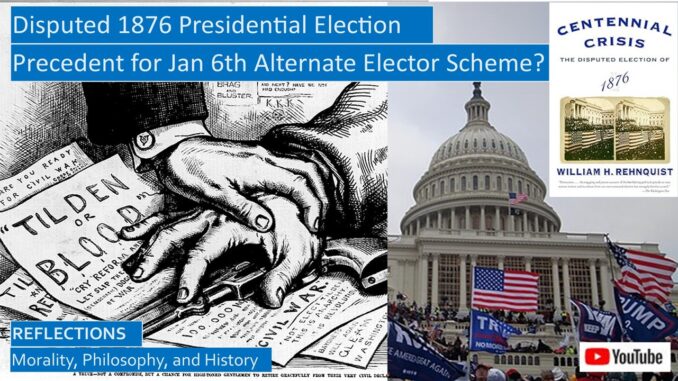
Where did the Republicans get the idea that they could appoint an alternate slate of electors and throw the 2020 Presidential Election into the House of Representatives, so Donald Trump could continue his Presidency?
Did they view the contested Presidential Election of 1876 as political precedent, where both parties selected a slate of electors in the disputed states of Florida, South Carolina, and Louisiana?
What was John Eastman thinking? Eastman was the Republican attorney who hatched the Electoral College plot, attempting a legal coup to nullify the results of the election, keeping Trump in power by throwing the election to the House of Representatives. Since each state has one vote, the Republicans have the advantage.
Did he think that since nobody was indicted for election law violations in 1877, that nobody can be indicted for election law violations after 2020?
We are reviewing Chief Justice William Rehnquist’s book, Centennial Crisis, the Disputed Election of 1876, written shortly after the Supreme Court stopped the Florida recount in Bush v Gore, awarding the 2000 election to George W Bush.
Powerpoint Script with Book Links:
https://www.slideshare.net/BruceStrom1/was-the-disputed-1876-presidential-election-valid-precedent-for-january-6th-fake-elector-scheme
YouTube Video for this blog: https://youtu.be/Ny0iyVYatB4
The disputed Election of 1876 is part of a long history of struggle over civil rights for blacks, and the conviction that over the long run, the civil rights of blacks can only be guaranteed by granting blacks the right to vote, which is why this right was guaranteed by the fifteenth amendment. The Lost Cause narrative claimed that the low point of the post-Civil War era was the empowerment of civil rights of blacks, while the history of Black Reconstruction by the black historian, WEB Du Bois, articulates the narrative that this era was a high point of American democracy and that the participation of the Negro was key to the North winning the Civil War.
What confuses many when first studying this history is how political allegiances have changed over this issue. When the Republican Party under Abraham Lincoln fought for the end of slavery and the championing of civil rights, the newly enfranchised blacks voted Republican, whereas whites in the Confederate states voted for the Democratic party that supported Jim Crow segregation laws. After Reconstruction, neither party was enthusiastic about civil rights, until the Democratic party under FDR, then Harry Truman, started the process of protecting the civil rights of blacks. After the passage of the Civil Rights legislation of the Sixties, Southern whites started changing their allegiance to the Republican Party after they were courted by politicians like Richard Nixon, Barry Goldwater, and Ronald Reagan.
American Slavery and the Abolitionists: Yale Lecture Notes
http://www.seekingvirtueandwisdom.com/american-slavery-and-the-abolitionists-yale-lecture-notes/
https://youtu.be/kmLg8CDjOOY
Stories of How Slaves Helped the Union Win the Civil War: Yale Lecture Notes
http://www.seekingvirtueandwisdom.com/stories-of-how-slaves-helped-the-union-win-the-civil-war-yale-lecture-notes/
https://youtu.be/89ulb20cy8Q
Post-Civil War Reconstruction and Redemption History, Yale Lecture Notes
http://www.seekingvirtueandwisdom.com/post-civil-war-reconstruction-and-redemption-history-yale-lecture-notes/
https://youtu.be/f5nPNnvDBCY
Refuting the Lost Cause: Black Reconstruction by WEB Du Bois
http://www.seekingvirtueandwisdom.com/refuting-the-lost-cause-black-reconstruction-by-web-dubois/
https://youtu.be/JeRCM4PAqPk
History of History of WEB Dubois’ Black Reconstruction, Challenging Lost Cause Myth and Dunning School
https://seekingvirtueandwisdom.com/history-of-history-of-web-dubois-black-reconstruction-challenging-lost-cause-myth-and-dunning-school/
https://youtu.be/CK4V3e-TPFU
Second Founding: The Reconstruction Amendments to the Constitution, by Eric Foner
http://www.seekingvirtueandwisdom.com/second-founding-the-reconstruction-amendments-to-the-constitution/
https://youtu.be/UciDV5laOLg
American Civil Rights History: Yale Lecture Notes
http://www.seekingvirtueandwisdom.com/american-civil-rights-history-yale-lecture-notes/
Early Civil Rights Era, Through World War II Era: Yale Lecture Notes
https://youtu.be/weGmYOe0Lyg
Civil Rights Era, Sixties and Beyond: Yale Lecture Notes
https://youtu.be/GQesHoV5IdI
Even with the Confederate states being compelled to vote for the Reconstruction Amendments before rejoining the Union, these amendments were ratified with difficulty. Northern Republican voters were tiring of paying for US Federal troops stationed in the former Confederate states to guarantee civil rights for blacks and to put down white supremacy terrorist gangs like the suppressed KKK.
Then came the Financial Panic of 1873, which was the greatest recession before the Great Depression of the Thirties. That with the many financial scandals of officials in the Grant Administration sparked a resurgence of the Democratic Party in the Northern states.
Sensing this weakness of the Republican Party, and the reluctance of many Northerners to firmly support black suffrage, white supremacists in the South suppressed the black vote with increasing violence and intimidation, and successfully and dramatically prevented many blacks from voting. Although the political parties were corrupt, the two candidates were actually reform candidates.
RUTHERFORD B HAYES, REPUBLICAN CANDIDATE
The Republican candidate, Rutherford B Hayes, was born in Ohio in 1822. After attending college, he attended Harvard Law School and was an early supporter of Abraham Lincoln, fighting as an officer in an Ohio Volunteer regiment. He was first elected to Congress while he was a soldier in 1864.
Hayes ran for governor of Ohio in 1867 and won, waving the bloody shirt, denouncing his Democratic opposition of supporting the secession of the Southern states before the Civil War. He won a narrow victory, though Democrats won control of the state legislature. Hayes supported a referendum allowing black suffrage in Ohio, but that also failed. In his second term, Ohio ratified the Fifteenth Amendment, guaranteeing the right of blacks to vote.
Hayes returned to private life in 1872 but was renominated for Governor for a third term and again won by a small margin in 1875. The Republican primary was hotly contested by six candidates, including Hayes. Not initially favored, he was nominated on the seventh ballot.[1]
SAMUEL JAMES TILDEN, DEMOCRATIC CANDIDATE
The Democratic candidate, Samuel Tilden, born in New York in 1914, was a delicate but precocious youth, reading books well beyond his age level. Like Hayes, Tilden was interested in both politics and the legal profession, practicing law in New York City, where many citizens sympathized with the Southern cause.
Martin Van Buren was a friend of the Tilden family, and they supported him in his winning 1836 Presidential campaign. Tilden continued to be active in both law and politics, but after the Confederates fired on Fort Sumter, he decided to support the Union cause as a Northern Democrat, although he did not fight in the war.
After the Civil War, Tilden opposed the corrupt Boss Tweed machine in New York City after they stole somewhere between thirty and two hundred million dollars from city coffers. He was nominated and elected as governor of New York, where he successfully fought corruption in the expensive maintenance of the Erie Canal. These reform efforts were a welcome contrast to the corruption by President Grant’s underlings, and he won the Democratic nomination on the first ballot.[2]
PRESIDENTIAL CAMPAIGN OF 1876
National politics was rough and tumble, even violent, before, during, and after the Civil War. This did not affect the Presidential candidates directly, they were not expected to travel the country campaigning, they campaigned from their front porch, occasionally issuing statements to newspaper reporters. This created distance between the Presidential candidates and the political campaigns run on their behalf, as both candidates in the 1876 election were reform candidates.
Northern voters were tiring of stationing federal troops in Southern states to preserve the civil rights of blacks. There was never monolithic support of civil rights for Negroes in the North, racist attitudes were prevalent in many states, particularly in the Midwest states. Although Hayes supported civil service reform, where lower-level federal offices were filled by merit without regard to political affiliation, he was less enthusiastic about civil rights.
Rehnquist notes that during the campaign, Hayes released a statement “recognizing the need for Southerners to control their own affairs but calling for respect for the constitutional rights of all citizens,” a promise made by Southerners that they never intended to keep. Hayes tried waving the bloody shirt during the campaign, which was a tactic of accusing your opponent of supporting the secessionist Confederacy, but not only was Tilden a New York Democrat, he was over the mandatory draft age, as he was in his mid-forties during the Civil War. Everyone expected that the vote would be close in this Presidential election.[3]
COUNTING THE VOTES BY TELEGRAPH
The advancing technology of the telegraph enabled party officials and newspapermen to quickly tabulate the election results soon after the polls closed.
In the 1874 Midterm Congressional elections, the Republicans lost a significant number of seats in both the Senate and the House but still retained a healthy majority in the Senate. But the Democrats won control of the House of Representatives with a solid majority for the first time since the Civil War.[4]
In the 1876 Presidential election year, the Republicans lost some states in the Senate contests, but still retained control of the Senate. But although the Democrats lost a significant number of seats in the House, they still retained their control of that chamber.
In the 1876 Presidential Election, the Republicans lost support in most states, but still carried all the New England states except Connecticut, and also New Jersey and Tilden’s home state of New York. But since more and more blacks were discouraged from voting in the South, the Republicans only hoped to gain the Southern states of Florida, South Carolina, and Louisiana, where President Grant had recently sent troops. Although Tilden won the popular vote, Hayes would win the Presidency if won the votes of these three states in the Electoral College. And, of course, Hayes would have won handily if black voters had not been intimidated in the Southern states.
Under the rules in effect in 1876, Rehnquist notes that “when there was a dispute as to which candidate had won the popular vote of a state, there was a possibility that two competing sets of electors, one from each party, will each cast votes for their respective presidential candidates,” which is exactly what happened.
The Constitution states that the electors will transmit their sealed votes to Congress, and then “the President of the Senate shall, in the Presence of the Senate and House of Representatives, open all the certificates, and the Votes shall then be counted.” Rehnquist notes, “The Constitution was silent as to who would do the counting.” The Electoral Count Act of 1887 removed this doubt, stating that the Vice-President would open the certificates in a ceremonial role, making it more difficult for both parties to send ballots for dual slates of electors.
Under the rules in effect in 1876, the newly elected President was scheduled to be inaugurated on March 4, 1877, so there were a few months to resolve this issue. The Twentieth Amendment to the Constitution, adopted in 1933, changed the inauguration date to January 20th.
Republicans visited the three contested states of Florida, South Carolina, and Louisiana, and it was clear that Hayes would have won in these states had there been no vote counting irregularities, without even considering whether the white supremacist terrorists prevented blacks from voting. In particular, in South Carolina blacks outnumbered whites by a ratio of five to three, the Republicans would have swept any fair election free of white terrorist intimidation. These challenges generated many legal challenges in these states.[5]
ELECTORAL COMMISSION APPOINTED TO RESOLVE CONFLICT
On Monday, December 4th, 1876, the states selected their electors, including the dual dueling electors from both parties from Florida, South Carolina, and Louisiana. In addition, there was a legal problem with one elector in Oregon, which was significant due to the close nature of the vote. Congress agreed to appoint an Electoral Commission to resolve the conflict, composed of five House members, five Senate members, and five members from the Supreme Court. After much discussion, it was decided that two Democratic leaning justices and two Republican leaning justices would be appointed, and they would select the fifth member. Everyone anticipated they would select Justice David Davis. Everyone considered Davis to be independent, so he would be the swing vote. [6]
The Democratic-controlled State Legislature of Illinois decided to influence his vote by appointing him to the US Senate, as this was before Senators were elected by popular vote. David Davis thanked them for the appointment, and promptly resigned from both the Supreme Court and the Electoral Commission! His independence meant he was elected president pro-tempore of the Senate in 1881.[7] The four justices then selected the Republican-leaning Justice Joseph Bradley, who was definitely not independent, and who would experience hostility for his role on the commission.[8]
What was the new procedure? In the legislation setting up the Electoral Commission, Congress mandated that, as Rehnquist recounts, that “first, the President of the Senate would open the certificates from each state.” “If a senator or representative objected to the certificate from that state, the question would be submitted to the Electoral Commission,” who “would consider the matter and report back its decision to Congress. The decision of the Commission would be final, unless overridden by” both the House and the Senate, which was unlikely since control was split between the two parties.
Of course, the ballots from the three contested states were sent to the Electoral Commission. The main issue was the scope of the Commission’s inquiry. Rehnquist states that the question was this: “Could the Commission ‘go behind’ the certificates sent to the President of the Senate and determine for itself whether the electors” “were properly chosen? Could it go even further beyond the certificate and decide whether voters in a particular state had been intimidated and prevented from casting their vote as a result?” Could the Commission hear witnesses and examine documents from the states?
After much complicated wrangling over several months, the commission voted eight to seven, in a straight party vote, to approve the Hayes electors. As expected, the Republican-controlled Senate voted to sustain the decision, and the Democratic-controlled House voted to reject the Commission’s decision. In speeches by Republicans in Congress, the Southern states were reassured that they would henceforth be able to run their own internal affairs, ending Reconstruction. This meant that the decision of the Commission stood, and Rutherford B Hayes was deemed to be elected President on March 2nd, two days prior to his Inauguration.[9]
THE DILEMMAS FACED BY PRESIDENT RUTHERFORD B HAYES
Rutherford B Hayes assumed the Presidency of a bitterly divided nation, with many Democrats considering him to be an illegitimate president. Rehnquist describes the many dilemmas he faced: “Hayes had never explicitly approved the commitment made by his lieutenants to remove federal troops from Louisiana and Florida. Grant had begun the process just before he left office, but postponed further actions at Hayes’ request. The new President wished to extract from the Democratic governors” “that they would respect the rights of blacks under the Civil War amendments to the Constitution. The governors duly promised, and the troops were removed shortly after Hayes took office. But the promises were” never kept.
Rehnquist continues, “Hayes had little choice in the matter. Democrats in the House had already refused to appropriate funds for the continued use of troops” to ensure civil rights for blacks in the South. “Northern public opinion had, over time, swung against the use of soldiers” “in the South. Hayes had been criticized for the withdrawal, but he had no” practical choice. But he did have success in promoting civil service reform.[10]
WAS THERE A BACKROOM DEAL TO END RECONSTRUCTION?
The narrative that I have heard is that there was a backroom deal in a smoke-filled cloakroom where the Republicans promised the Democrats that they would withdraw Northern troops from the former Confederate states in exchange for accepting the Republican Rutherford B Hayes as President. Although this was what in effect happened, and there likely were discussions in the cloakrooms of Congress, the Compromise of 1877, in William Rehnquist’s account, evolved organically over many months of political wrangling.
What was the source of this narrative? Dr Wikipedia notes that the historian C Vann Woodward published a book in 1951 that claimed there was a series of high-level secret meetings in Wormley’s Hotel in Washington, DC, to hash out an agreement between the two political parties, covering not only the electoral commission and the ending of Reconstruction, but also internal improvements such as the Trans-Continental Railroad, and other matters. Many historians accept that there was an informal agreement at these meetings,[11] but how much these meetings influenced events, and how much events influenced these meetings, is difficult to determine. But the simple fact that during the election Hayes released a statement promising to allow Southern states to assume control over their own internal affairs suggests that these meetings were more about problems facing the upcoming Congress.
The unfortunate ending of Reconstruction paved the way for the Southern states to deny the vote to their black citizens and pass oppressive Jim Crow segregation legislation, as well as tolerating lynchings and denying due process under the law to blacks. Ironically, the justice Rutherford B Hayes appointed to the Supreme Court as a compromise to Southerners, the former slave-owning Kentuckian John Marshall Harlan, became known as the Great Dissenter, writing many lone opinions defending civil rights in the separate-but-equal opinion of Plessy v Ferguson, and other civil rights cases.
Second Founding: The Reconstruction Amendments to the Constitution, by Eric Foner
http://www.seekingvirtueandwisdom.com/second-founding-the-reconstruction-amendments-to-the-constitution/
https://youtu.be/UciDV5laOLg
ELECTORAL COUNT ACTS OF 1887 AND 2022
The one underlying question in both the 1876 and 2020 elections is whether blacks should be denied the right to vote, or whether they should be discouraged from voting. There were very few irregularities in the 2020 elections, losing 62 court cases claiming voter fraud.[12] In contrast, there was rampant electoral fraud in the 1876 Presidential election on both sides.
The Electoral Count Act of 1887 tightened up the counting of votes by the states to minimize the possibility that Congress would need to investigate the validity of the electoral college votes.[13] This act was revised by the Electoral Count Act of 2022, resolving many ambiguities, and clarifying that the role of the Vice President in counting the electoral votes is ceremonial. Under the 1887 act, only one Senator and one Representative was needed to challenge the electoral votes of a state, the 2022 act amended this so that one-fifth of Senators and Representatives would be needed to challenge the vote of a state, and the grounds for objecting were greatly limited.[14]
WILLIAM REHNQUIST AND CONTESTED ELECTION OF 2000
This book was written in 2004 by Chief Justice William Rehnquist, one of the Republican-appointed justices who were part of the majority opinion in Bush v Gore, which enabled the Republican George W Bush to win the electoral college vote by one vote. The Florida vote was very close, the Florida Supreme Court mandated a recount of 61,000 undervotes that were not tabulated by the voting machines. The Supreme Court halted this recount in a five to four decision. Media accounts later concluded that if the Florida recount had been allowed to continue, Al Gore would have won the election.[15]
Richard Nixon had nominated William Rehnquist for Associate Justice in 1971. He took a narrow view of the Fourteenth Amendment, that it should only apply to race as it was passed after the abolition of slavery and held a broad view of state power. Rehnquist was conservative, but not ideological, concerned with preserving precedent. Rehnquist was nominated as Chief Justice of the Supreme Court by Ronald Reagan in 1986, he died from cancer in 2005,[16] shortly after publishing this book.
DISCUSSING THE SOURCES
William Rehnquist not only has written an excellent history of the disputed election of 1876, but he has also written an excellent introduction on the events framing this crisis in American democracy, going back to our country’s founders. This includes background on not only the biographies of the candidates, but also the other participants in this drama, including the members of the commission, and also the history of the Supreme Court itself.
There is also an online version of the book:
https://archive.org/details/centennialcrisis00rehn/page/n293/mode/2up
[1] William Rehnquist, Centennial Crisis, The Disputed Election of 1876, Chapter 2, pp. 33-57.
[2] William Rehnquist, Centennial Crisis, The Disputed Election of 1876, Chapter 3, pp. 58-79.
[3] William Rehnquist, Centennial Crisis, The Disputed Election of 1876, Chapter 4, pp. 80-93.
[4] https://en.wikipedia.org/wiki/1874%E2%80%9375_United_States_House_of_Representatives_elections and https://en.wikipedia.org/wiki/1874%E2%80%9375_United_States_Senate_elections
[5] William Rehnquist, Centennial Crisis, The Disputed Election of 1876, Chapter 5, pp. 94-112 and https://en.wikipedia.org/wiki/Electoral_Count_Act and https://en.wikipedia.org/wiki/Twentieth_Amendment_to_the_United_States_Constitution
[6] William Rehnquist, Centennial Crisis, The Disputed Election of 1876, Chapter 6, pp. 113-119.
[7] https://en.wikipedia.org/wiki/David_Davis_(Supreme_Court_justice)
[8] William Rehnquist, Centennial Crisis, The Disputed Election of 1876, Chapter 7, pp. 159-162.
[9] William Rehnquist, Centennial Crisis, The Disputed Election of 1876, Chapter 8, pp. 162-179.
[10] William Rehnquist, Centennial Crisis, The Disputed Election of 1876, Chapter 10, pp. 201-204.
[11] https://en.wikipedia.org/wiki/Compromise_of_1877
[12] https://en.wikipedia.org/wiki/Post-election_lawsuits_related_to_the_2020_U.S._presidential_election
[13] https://en.wikipedia.org/wiki/Electoral_Count_Act
[14] https://en.wikipedia.org/wiki/Electoral_Count_Reform_and_Presidential_Transition_Improvement_Act_of_2022

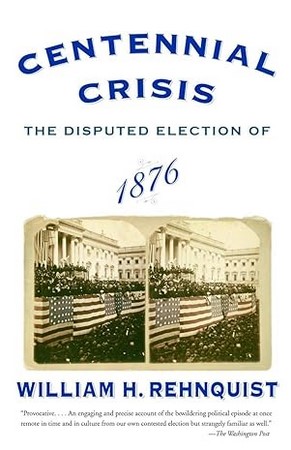
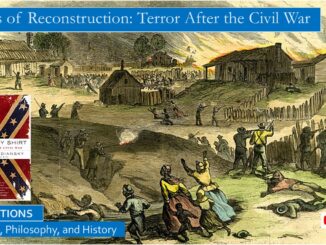
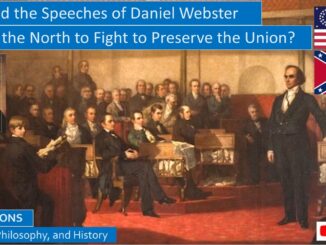
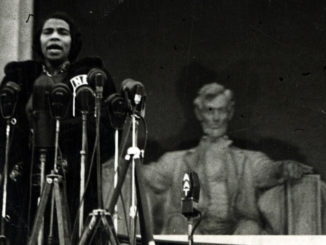
Be the first to comment